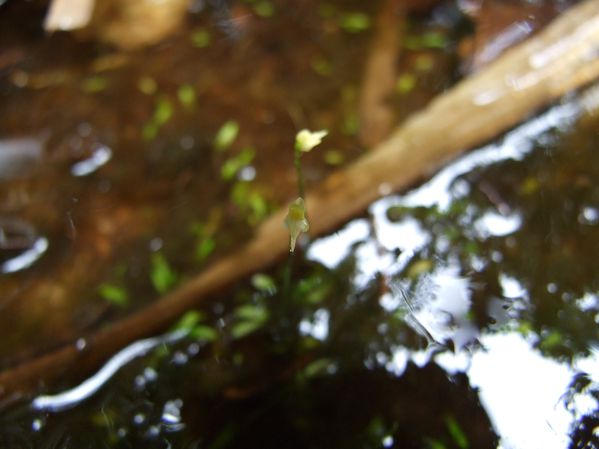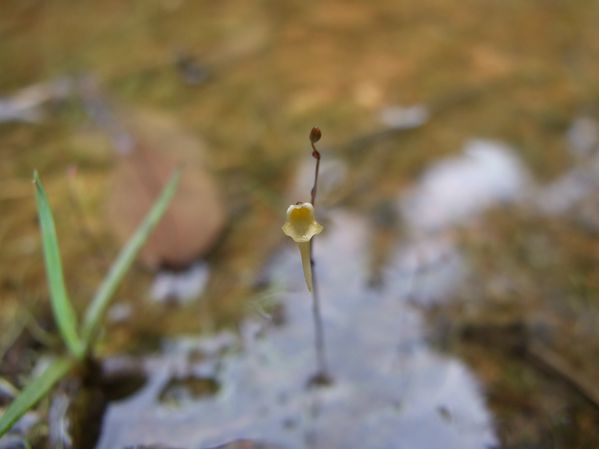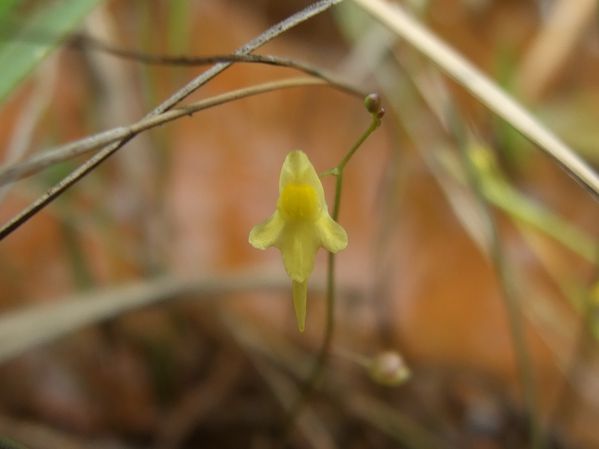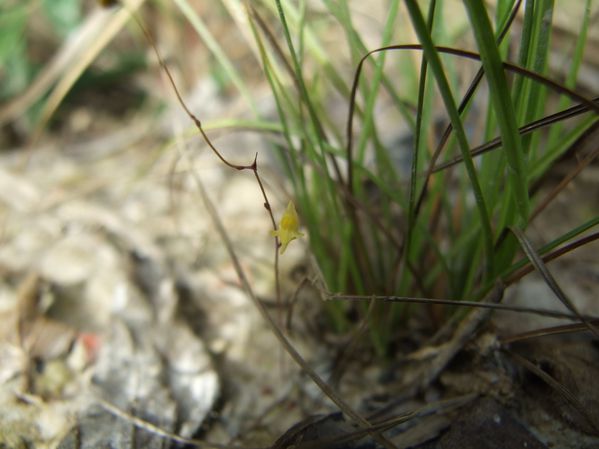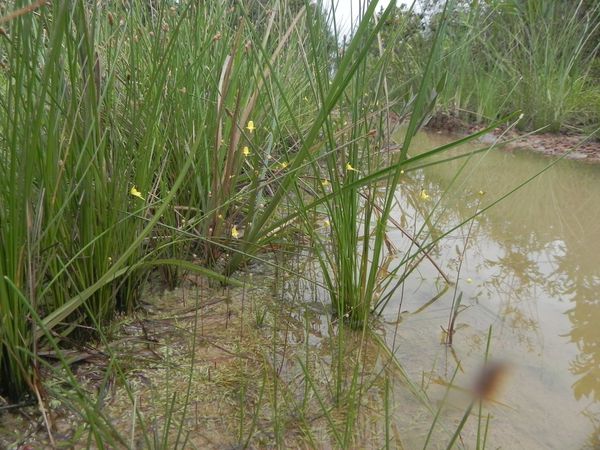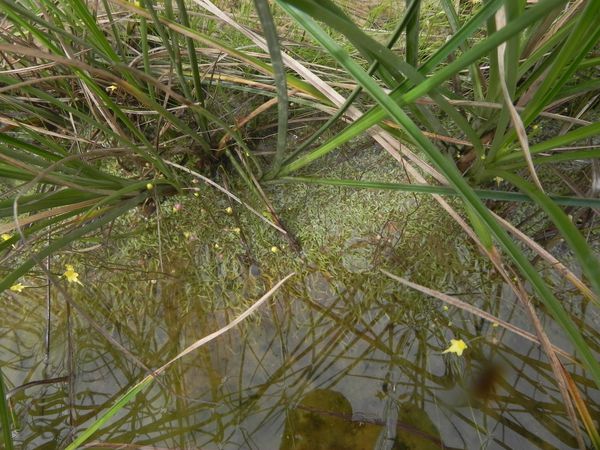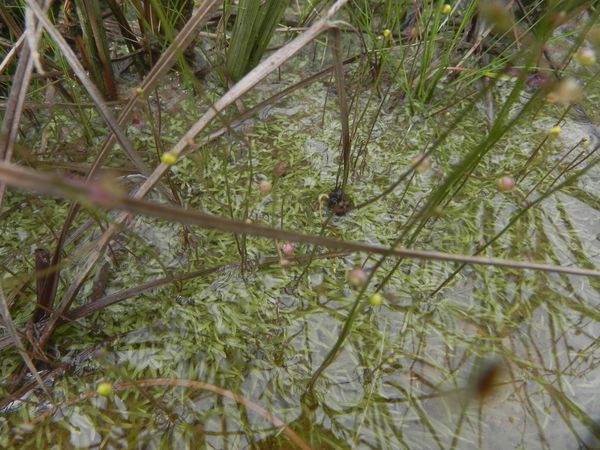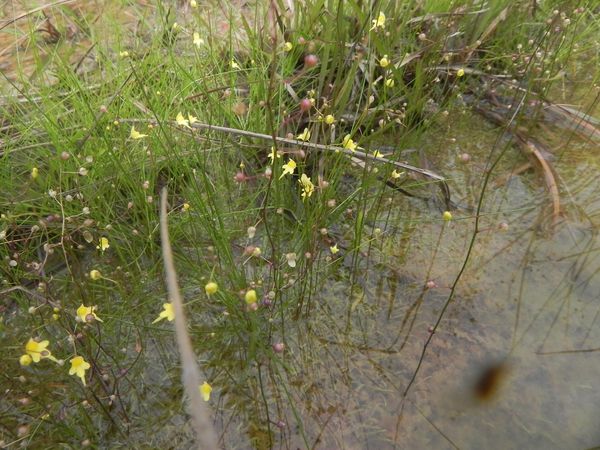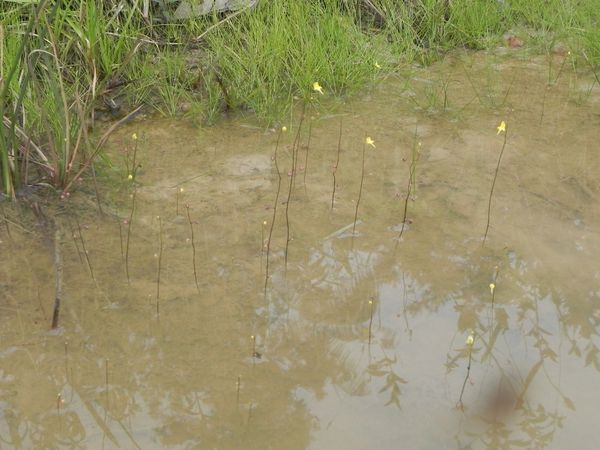Utricularia pusilla : This plant is easy to find, but is one of the smallest Utricularia from Fr.Guyana :
one must have good eyes to detect them if they grow solitary :
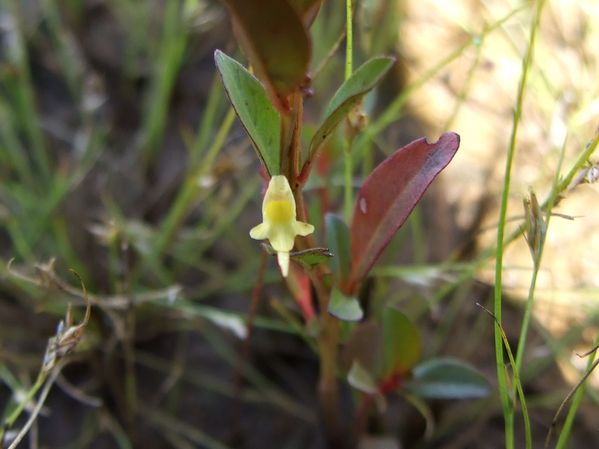
Some other plants decide to live together ; even if the group is rather small in this exemple,
some colonies become pretty big if the conditions are good (see downwards)
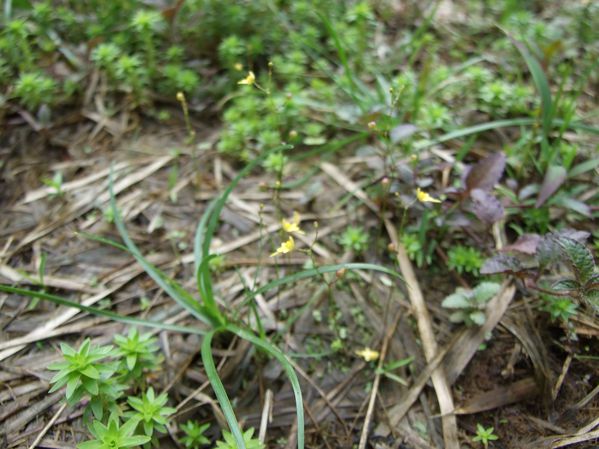
This plant can be found :
- in savanas, in rather dry & in humid conditions
- in the forest, along streams or bogs, or along the road
- on farmed land, mainly in the wet depressions of the road, or along this road
- along rivers, on banks covered with low vegetation

This form grow in the forest, where the light is shadowed by the great amount of trees
and of the other vegetation : that's why the corolla is so small.
The spur apears to be extraordinaringly long,
but in fact, it's the reduced petals wich make the spur appear so :
See here, the difference is obvious : in this biotope, the petals are much larger
This is a small comparison chart of the different type of corolla's I found :

Here is a colony of greather extension :
it live in a savana, in a pretty wet depression filled with a layer of water of about 2cm to 10cm deep :
Here the conditions are the best to make leaves !
The result of a combination of water + space to grow + good light is a healthy colony,
wich consists in houndreds of plants growing all together, and wich can be observed
at every stage of growth (attention, there are also some cleistogamous U.subulata on the picture) :
If the water level is higher, the plants grow together with U.subulata,
wich will replace it in the deepest parts of the humid biotope :
__Main Page__
